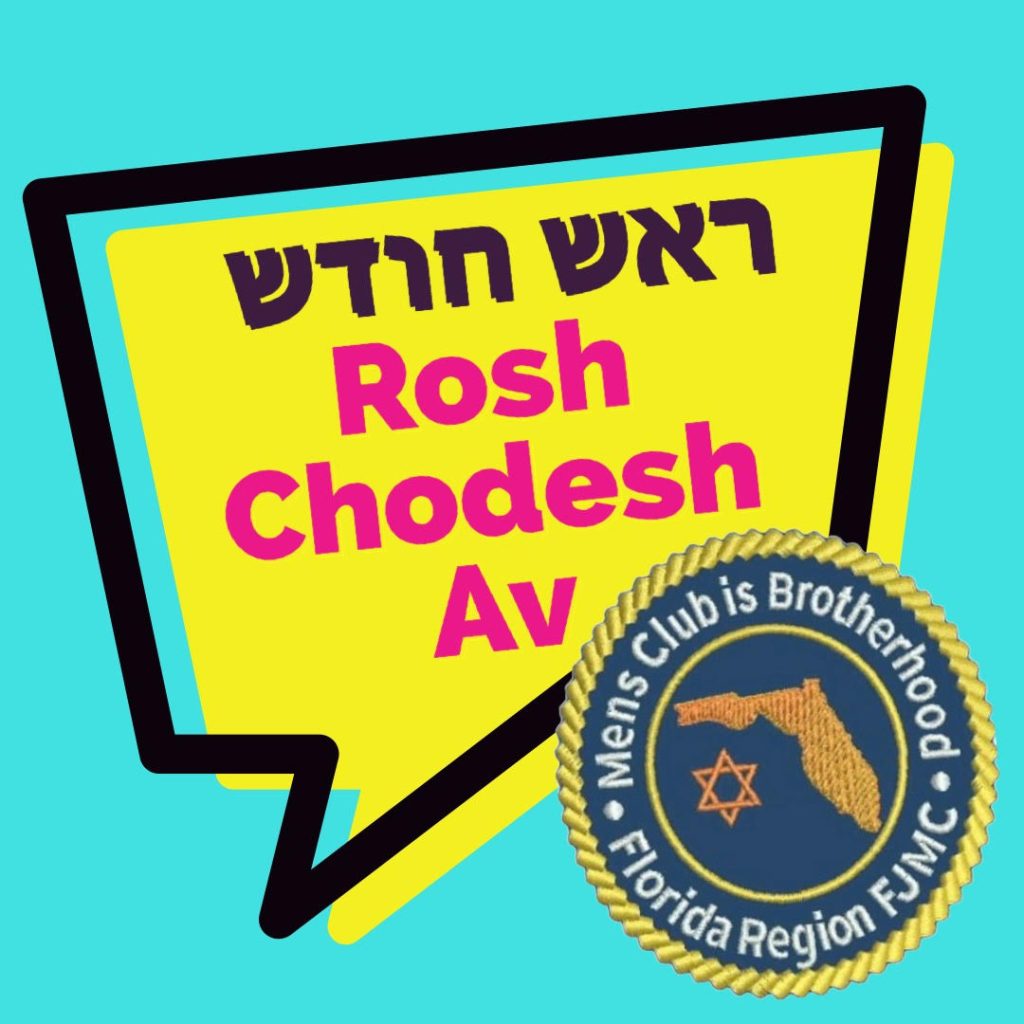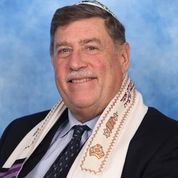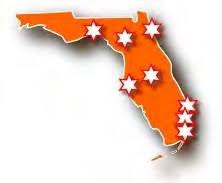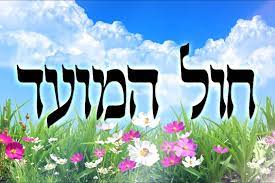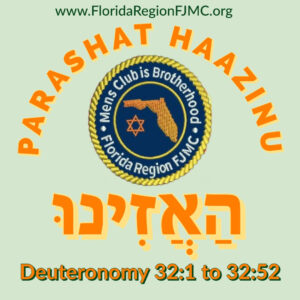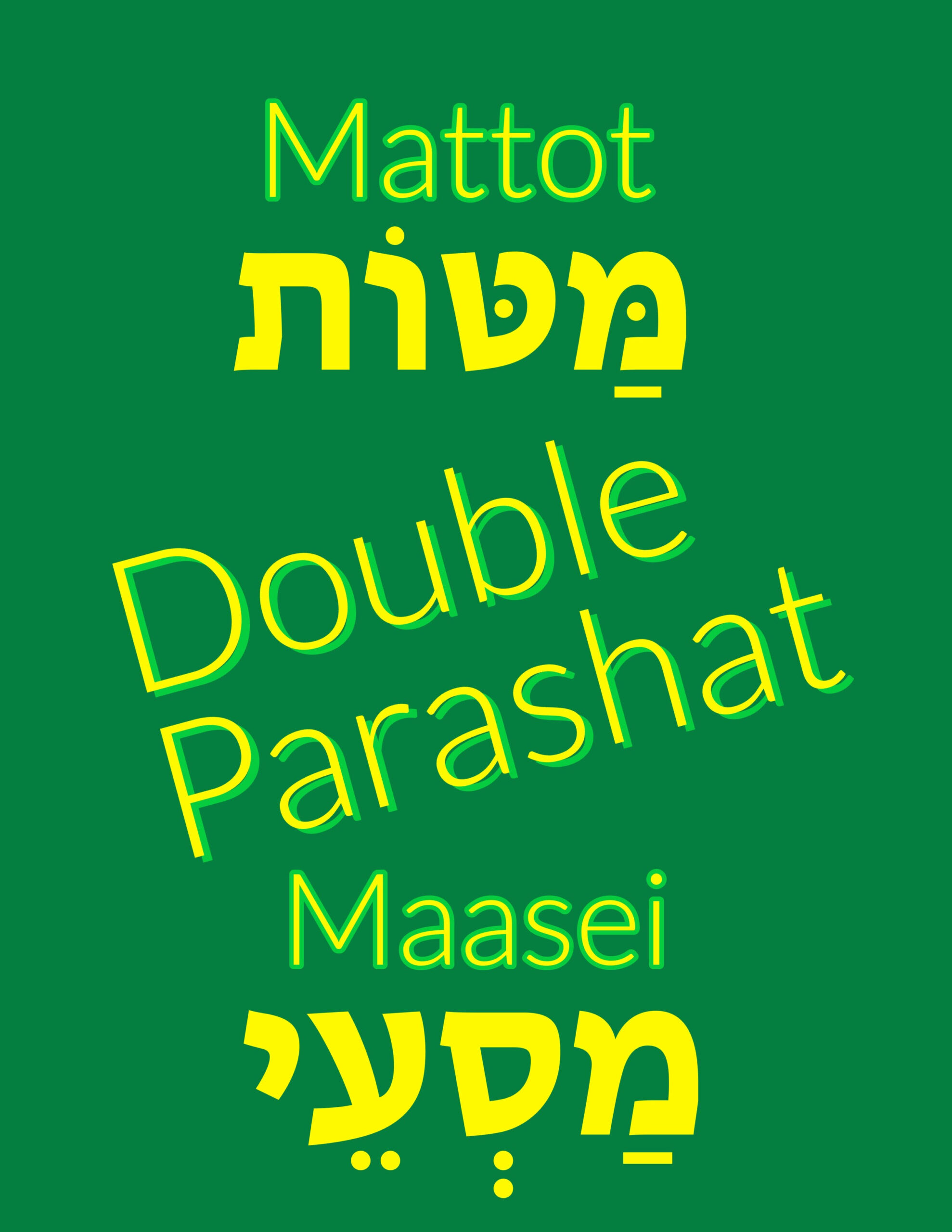
When you Choose Shabbat, you choose to learn that every Shabbat is different and special. This week we read from Parashat Mattot (מַּטּוֹת) and Parashat Maasei (מַסְעֵי), the 42nd and 43d weekly Torah portions in the annual cycle of Torah readings, respectively.
You may ask, why do we read a double Parashat this week? The answer can be found in the lunisolar Hebrew calendar which contains up to 55 weeks, the exact number varying between 50 in common years and 54 or 55 in leap years. According to Wikipedia, in some leap years (last in 2014), Parashah Mattot is read separately. In most common years (from now through 2035 in the Diaspora), Parashah Mattot is usually combined with the next parashah, Maasei, to help achieve the number of weekly readings needed.
According to Wikipedia, Mattot (מַּטּוֹת), Numbers 30:2 through 32:42, contains 5,652 Hebrew letters, 1,484 words, 112 verses and makes up 190 lines of the Torah scroll. Mattot (the Hebrew word for “tribes”) includes the laws of vows, the destruction of Midianite towns and negotiations of the Reubanites and Gadites to settle land outside of Israel.
In contrast, Maasei (מַסְעֵי), Numbers 33:1 through 36:13, contains 5,773 Hebrew letters, 1,461 words, 132 verses and 189 lines of Torah and discusses the stations of the Israelites’ journeys, instructions for taking the land of Israel, cities for the Levites, cities of refuge and the daughters of Tzelophechad.
Rabbi Michael D Klein of Temple Torat Emet offers his insights on this week’s double Torah reading, Mattot and Maasei for Shabbat Rosh Chodesh, July 26, 2025 aka 1 Av 5785:
“The great Chinese philosopher Confucius stated that “a journey of 10,0000 miles begins with a single step”. These profound words are the framework for the Sedrot that we read this Shabbat. We recount the journey from Egypt, forty years past, as we prepare to cross the Jordan river and enter the Promised Land. Every single stop on the long, arduous journey is recalled, as are the associated events, both good and bad.
Where did this journey really begin? It is important to realize that it all began with the realization of the belief in one G-d by our ancestors Abraham and Sarah. The Torah recounts that Abraham received a vision of the slavery and subsequent liberation and the trials and tribulations that the Jewish people would undergo. It also began with the bitterness of slavery and miracles wrought by G-d against Pharaoh and Egypt which led to eventual freedom. It also began with the revelation of the Torah and 613 Commandments given to Moses and the Jewish people on Sinai. We are a desert people. Our faith, our courage to face the future, and our belief in the One G-d, all occurred in the desert. This hardened us and made us resolute in the face of the many challenges our people have faced in our 5000 year existence.
As we begin the Month of Av, traditionally a difficult historical time for our people, we look to the Torah for inspiration and encouragement. The Sedra Matot begins with the Laws of honoring vows. It reminds us that our word is sacred and the vows we make to G-d and each other are more than just words; they represent truth!
Torah portion Maasei ends the narrative of the inheritance of the daughters of Zelophehad whose sincere request to keep their father’s tribal inheritance exhibits an act of faith on their behalf that the Land of Israel is a precious inheritance to the People of Israel. Both of these ideals represent the future success of our people and tell us that wherever we journey, we carry our Sacred Heritage with us-our vows and Land of Israel are sacred reminders that we must always be ready to take that first step on the journey of life with belief on G-d and the holiness of our words and deeds.
Chazak, Chazak, Venitchazek!”
Questions to Consider:
- Describe the boundaries of Israel outlined in these Sedrot. How do they compare with the modern borders of Israel?
- How is the request of the daughters of Zelophehad carried out compared to the actual ruling?
- Why was it necessary for the Torah to recount each step in the journey from Egypt to Israel?
- Why is the end of Bamidbar a good framework for the final of the five Books of Moses?
Rabbi Michael D. Klein attended Yeshiva College of South Florida and served as Torah Reader, Hebrew teacher, Chazzan and spiritual leader of various synagogues throughout South Florida. In January 2015 he became Ritual Director, Bnai/Bnot Mitzvah instructor and 7th grade Hebrew instructor for Temple Torat Emet of Boynton Beach. In October 2019 he was accepted into an accelerated track and received his smicha from Yeshiva Adath Wolkowisk and has been the Rabbinic leadership of Temple Torat Emet since August 2020. In September of 2022 he was appointed Rabbinic and Spiritual Advisor of the Florida Region of FJMC.
Choose Shabbat; choose to celebrate, to light candles, sing songs and learn a little Torah.
This moment of Jewish Learning is brought to you by the Florida Region of FJMC International (FJMC). We are part of a confederation of over 200 Jewish Men’s Clubs and Brotherhoods representing over 20,000 members across the United States, Canada, Latin America, and beyond. Learn more about how your Jewish Men’s Club or Brotherhood can affiliate with the FJMC at: https://fjmc.org/for-clubs/affiliating-with-the-fjmc/.
The Florida Region of FJMC serves the needs of affiliated Men’s Clubs and Brotherhoods throughout the State of Florida. Get to know more about the FJMC Florida Region and our growing network of Jewish Men’s Clubs and Brotherhoods at www.floridaregionfjmc.org and please visit and LIKE our Florida Region FJMC Facebook Group at www.facebook.com/FloridaRegionFJMC.

